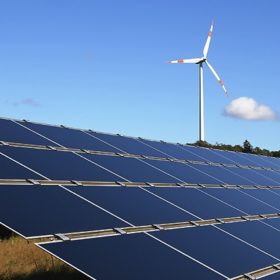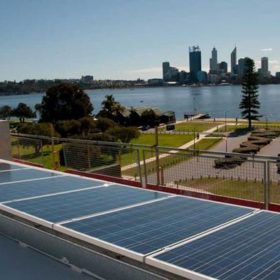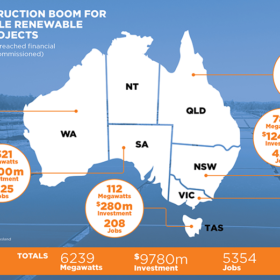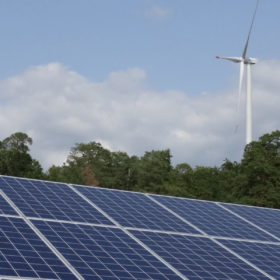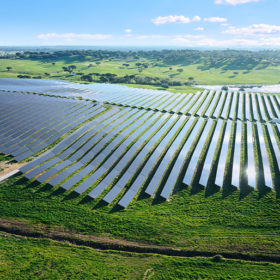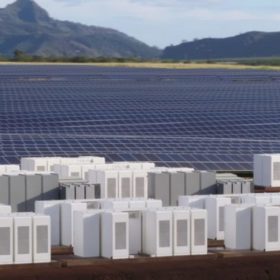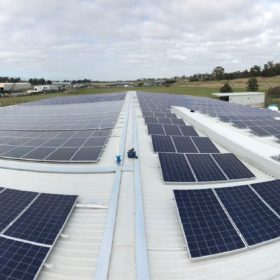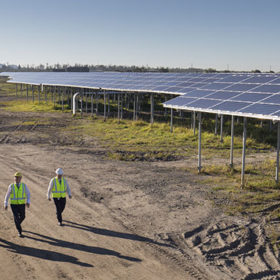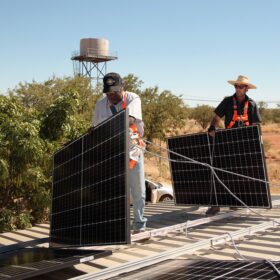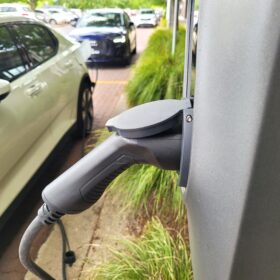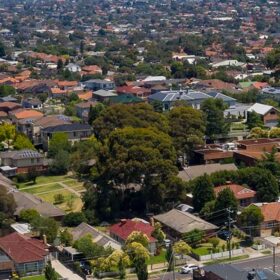Energy Security Board issues final NEG design details, urges immediate endorsement
On the back of its large-scale renewable boom, Australia has seen a drop in wholesale electricity prices and a downward emissions trajectory. So, the questions arises: what extra value can the hotly-contested National Energy Guarantee create for Australia’s electricity market beyond 2020? The Energy Security Board has had its final say on the issue.
WA energy minister shifts focus from solar subsidies to battery incentives
The Western Australia government has signaled scrapping or winding back subsidies for rooftop solar, while looking for ways to boost battery uptake.
CEC: 3.1 GW of solar in construction pipeline, policy uncertainty undermines long-term investment confidence
According to the latest statistics from the Clean Energy Council (CEC), there are 42 wind and solar projects totaling 6239 MW worth close to $10 billion currently in construction or due to start soon across Australia. The unprecedented large-scale renewables activity is, however, surrounded by growing uncertainty over future policy and regulatory change.
AEMC turns to new technologies
In its annual reports, the Australian Energy Market Commission has proposed a number of changes to tighten Australia’s power system and improve reliability and regulation, reflecting on opportunities and challenges created by a significant increase in the uptake of distributed energy resources. The new recommendations are likely to encourage network development towards P2P energy trading, VPPs and electric vehicle charging.
CEFC invests in 1,100 MW clean energy projects in FY18
Looking back on the 2017-18 financial year, the Clean Energy Finance Corporation (CEFC) has confirmed it provided $1.1 billion towards renewable energy projects, including 10 large-scale solar projects.
Victoria’s 100 MW solar farm receives financial green light
Having finalized the financing agreement for the project, French renewable energy producer Neoen announced that full construction on Victoria’ Numurkah Solar Farm is ready to commence this week, with major supply contracts previously secured for the Laverton steelworks and the Melbourne tram network.
AEMO: Integrated System Plan spurs wide-ranging reactions
The Australian Energy Market Operator’s wide-ranging and detailed Integrated System Plan prompted a flurry of media reactions that boil down to two conflicting interpretations of its purpose. Some interpreted the findings as a call to hold on tight to coal-fired power, while others a remarkable confirmation that renewables are the optimal electricity source of the future, and high penetrations are both practicable and cost effective.
Renewable electricity generation on rise, jobs at risk – GEM
Green Energy Markets’ latest analysis shows that the National Electricity Market is on track to get 33% renewable electricity by 2020, with individual states performing well beyond that. In addition, the report shows that solar jobs will be lost unless the National Energy Guarantee’s 26% emissions reduction target by 2030 is lifted.
Tasmania undertakes FiT review, inaugurates major commercial solar PV project
The Tasmanian government is undertaking a review of the FiT support scheme, which it says will lower the cost of electricity for Tasmanian households and small businesses. With one of the state’s largest commercial solar PV projects commissioned yesterday, the government is edging towards its objective of making Tasmania’s electricity 100% renewable by 2022.
Sunshine Coast Solar Farm doubles expected savings in first year
The 15 MW Sunshine Coast Solar Farm at Valdora, Queensland, has far exceeded savings expectations in its first year of operation while offsetting 100% of the local council’s energy usage across all facilities and operations.

